Overview
Quantum gases of ultracold polar molecules are an especially powerful tool for studying strongly interacting dipolar quantum many-body physics. The reason for that is their large internal electric dipole moment (in case of our molecule 23Na39K: 2.72 D) which gives rise to the strong, long-range and anisotropic dipole-dipole interaction. By means of external electric fields, the strength and direction of this interaction is even tunable in the frame of the laboratory. This makes the system a versatile platform with precise control over all parameters for emulation of various quantum systems including dipolar spin and extended Hubbard Hamiltonians. In particular, the parameter space lies beyond the accessible regime of (magnetic) atoms since their dipole moment is orders of magnitude weaker than that of polar molecules (e.g. Dy: 0.09 D).
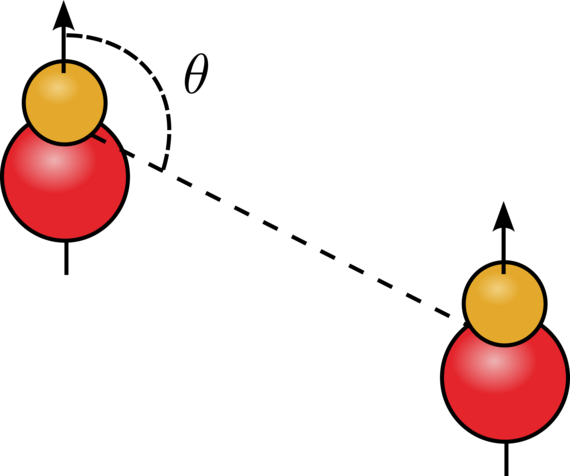
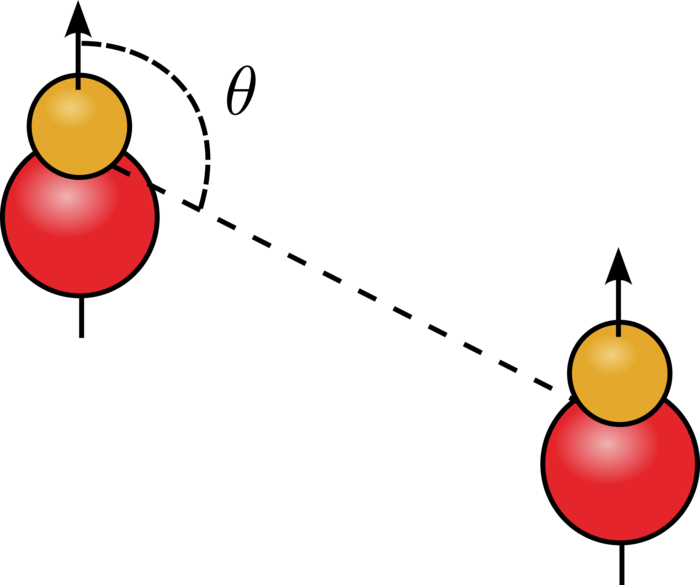
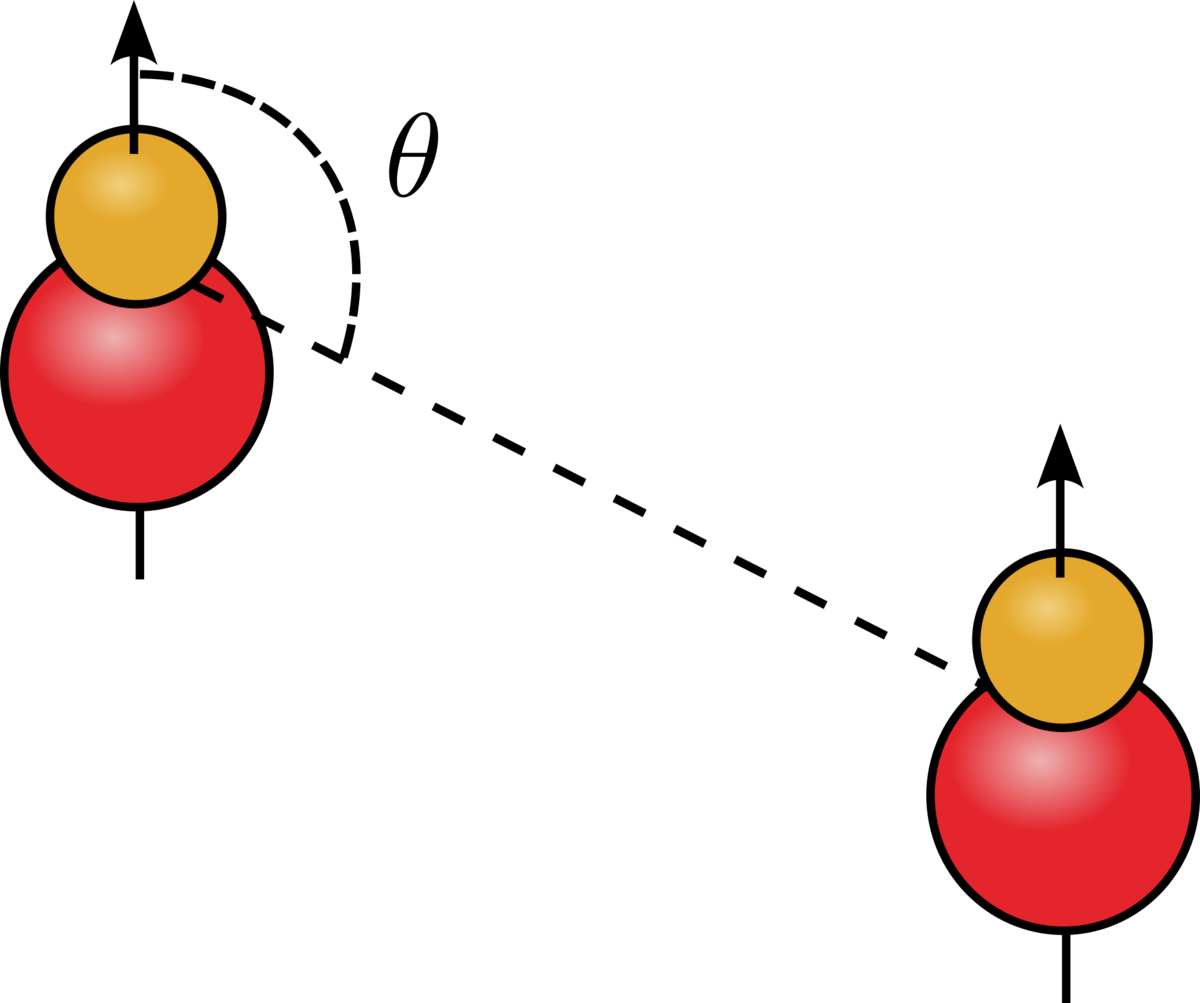
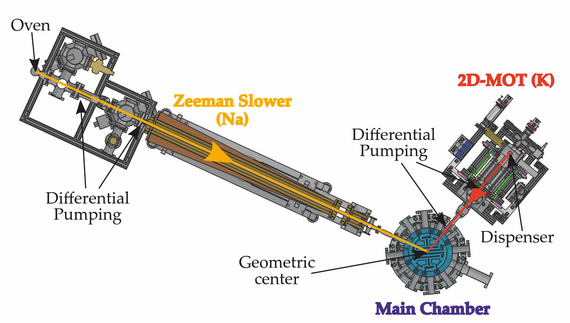
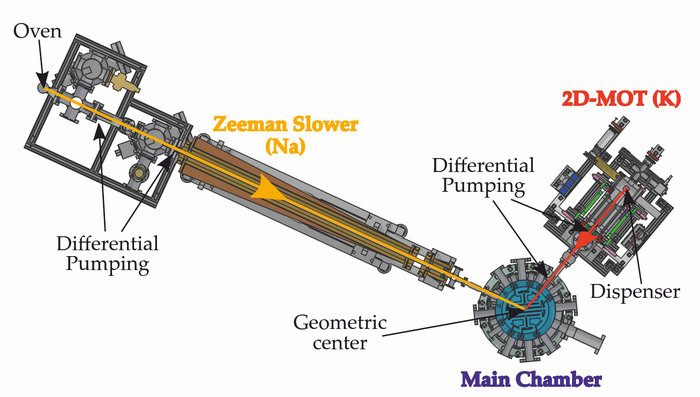
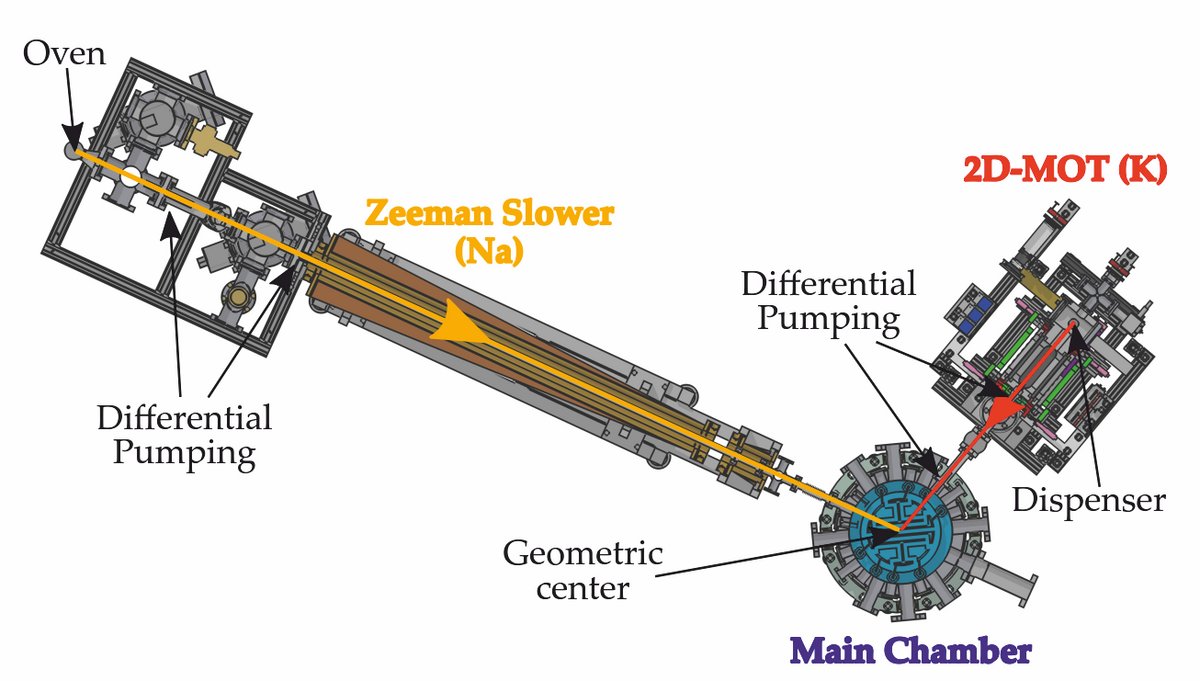
Cooling hot atoms down to an ultracold mixture
All our experiments start with hot samples of sodium and potassium that are collected in our main vacuum chamber after an initial cooling stage via Zeeman slowing and 2D magneto-optical trapping for 23Na and 39K, respectively. After trapping both species in our two-colour 3D-MOT and subsequent laser cooling below the Doppler limit in a molasses, the atoms are transferred into a plugged magnetic quadrupole trap. There, direct cooling of sodium via microwave evaporation allows to cool the whole mixture thanks to sympathetic cooling of potassium. When the mixture reaches a temperature on the order of 10 µK, we transfer the atomic mixture into a crossed optical dipole trap where we can apply a homogeneous magnetic field of up to 900 G. This allows us to control the scattering properties of the atoms by means of magnetic Feshbach resonances and evaporatively cool the mixture further, drastically increasing the phase space density of the ensemble. In the past, we used this technique to create the first doubly degenerate mixture of sodium and potassium [Schulze2018].
Creation of ground-state NaK molecules
In the next step, we assemble NaK molecules from the atomic mixture while keeping them ultracold. With the magnetic field tuned close to a Feshbach resonance, radio frequency (rf) radiation bridges the energy gap between the atomic and molecular state and associates pairs of sodium and potassium atoms to weakly-bound (Feshbach) molecules. Subsequently, these are transferred to their rovibrational ground state via stimulated adiabatic Raman passage (STIRAP). In 2019, we detected the first ground-state ensemble of bosonic NaK molecules [Voges2020].
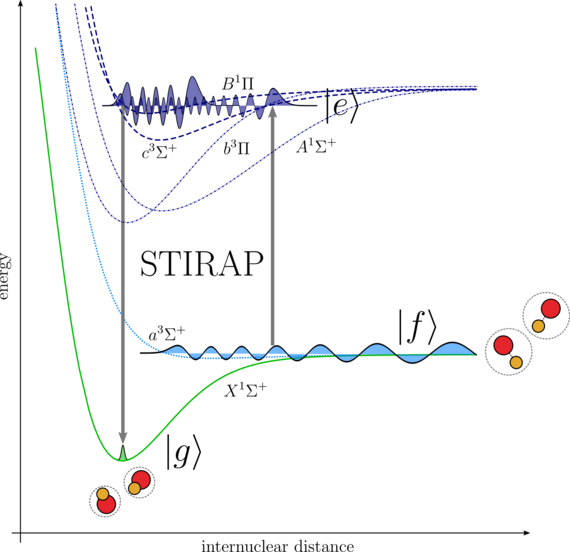
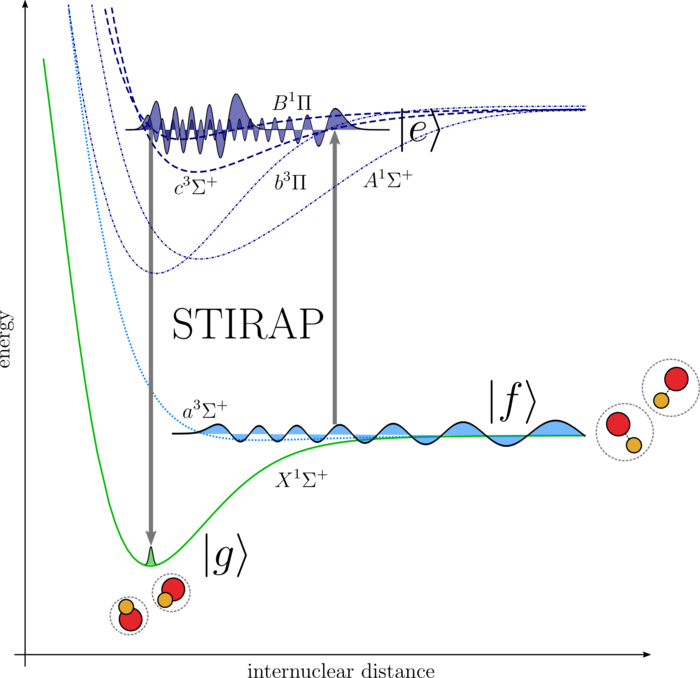
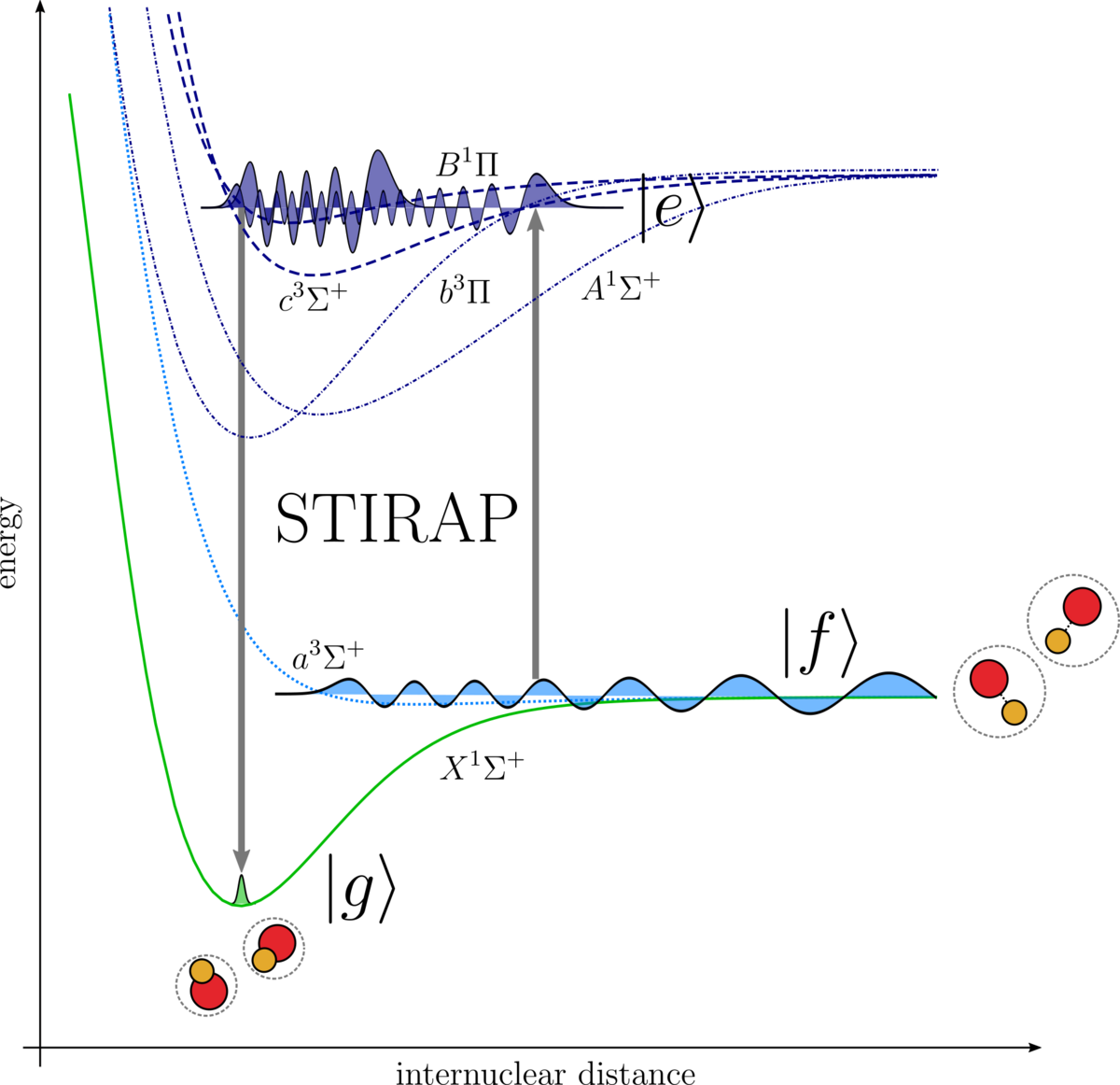
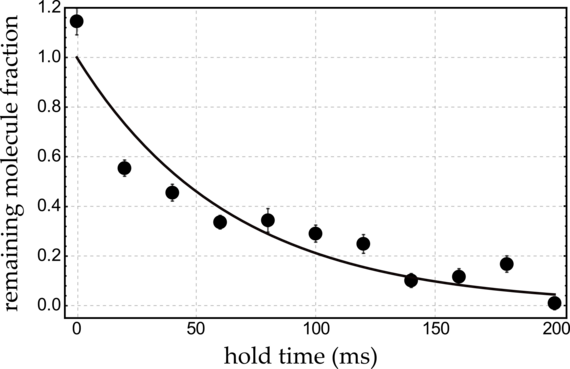
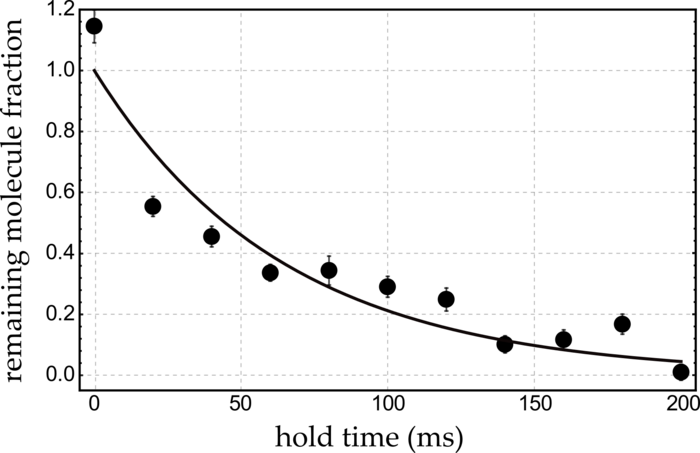
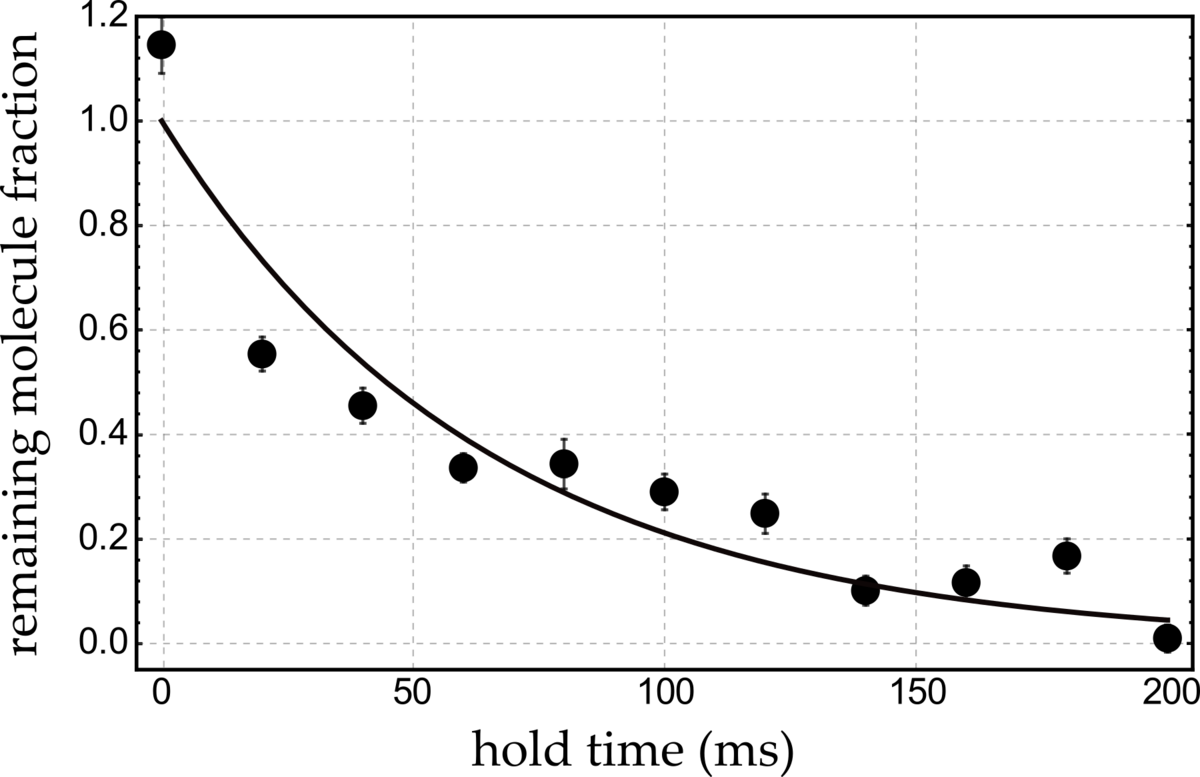
Collisions of ultracold dipolar molecules
Surprisingly, despite being chemically stable, the ground-state NaK molecules exhibit strong two-body losses, limiting the lifetime in the trap to only a few tens of milliseconds and preventing more advanced experiments [Voges2020, Gersema2021]. Similar observations have been made with other species of polar molecules. While the exact mechanism is still subject of theoretical and experimental investigation, it is known that the losses stem from the interaction of the molecules in the short range where tetramers with a vast density of states can be formed and subsequently be lost. Therefore, a way to circumvent those losses is to manipulate the potential of the colliding molecules so that a repulsive barrier is formed that keeps them from reaching the short range. This has successfully been demonstrated in other groups by coupling several rotational states with microwave radiation and facilitated the creation of the first degenerate quantum gases of polar molecules.
Prospects
Currently, we pursue a novel shielding approach using two optical fields which should offer the advantage of better control over the relevant parameters [Karam2023]. Stabilising the molecular ensemble will open up multiple exciting possibilities to explore many-body interactions of the dipolar gas. The formation of a molecular BEC is only the first step to delve into the physics of polar quantum gases. Since the dipole moment of our molecules in the lab frame is tunable to very high values by electric fields, we expect exotic supersolid states to emerge in bulk experiments which are beyond reach in atomic systems. Moreover, we plan to load our molecules into an optical lattice where the strong dipole moment causes molecules to interact with each other even when they are more than only one lattice site apart. This next-to-nearest neighbour interaction is described by extended Bose-Hubbard models, which predict to find interesting dynamics and novel quantum phases like the Haldane insulator in a system like ours.
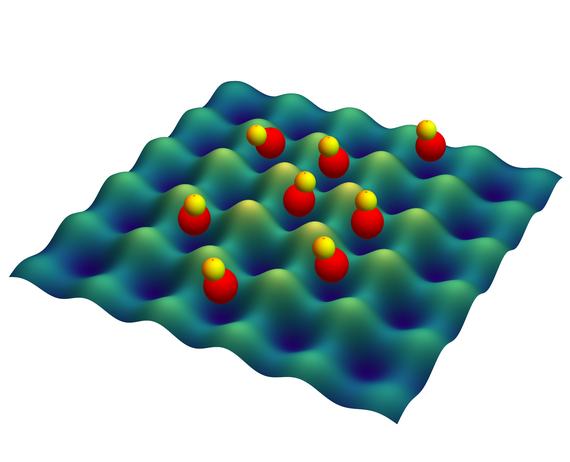
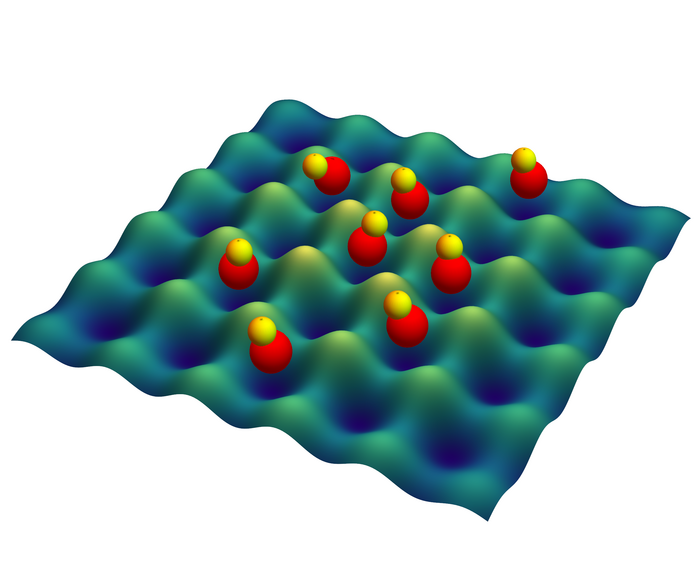
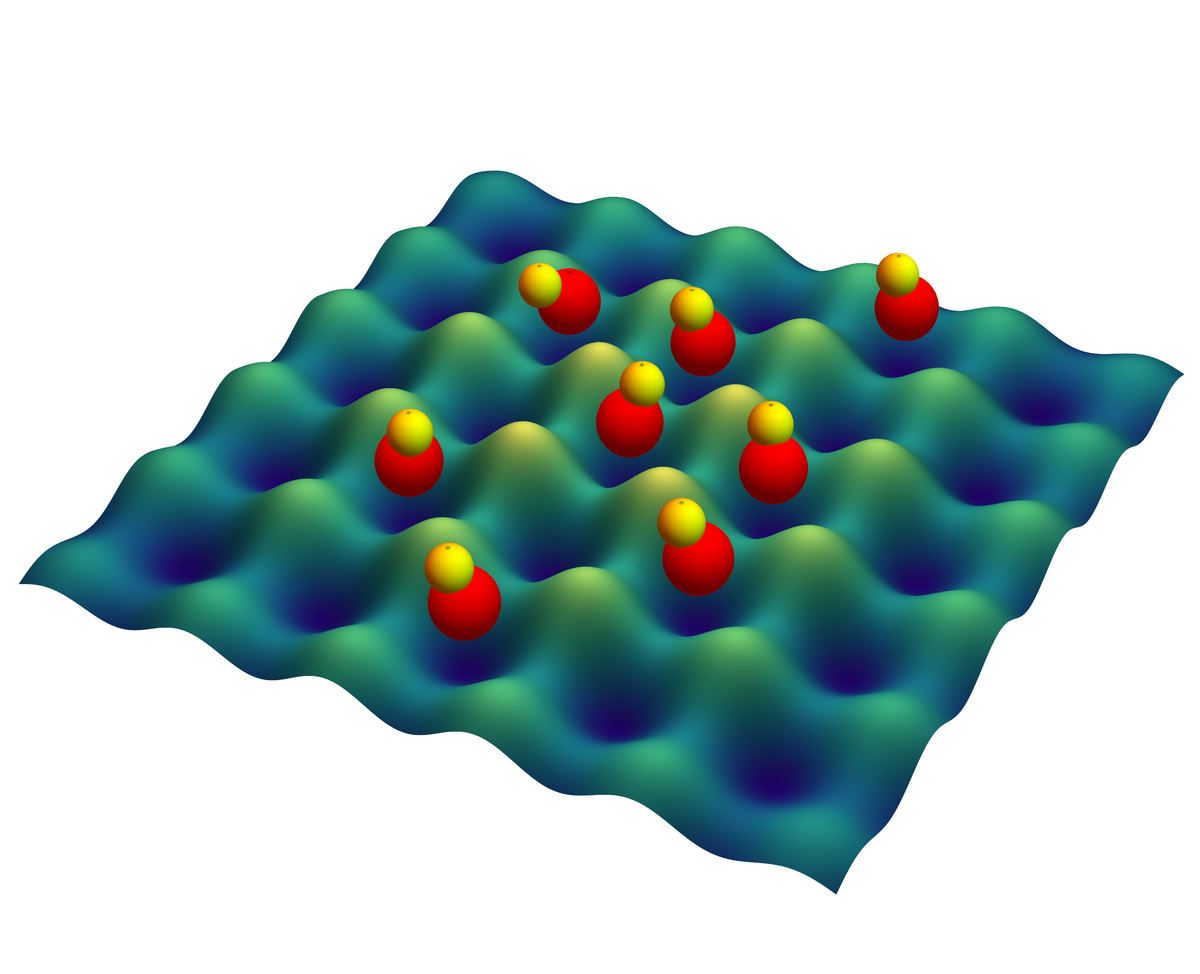
We have open positions for motivated PhD, Master and Bachelor students! If you are interested, just contact us and we are happy to discuss specific projects with you.
The Team
Principle Investigators
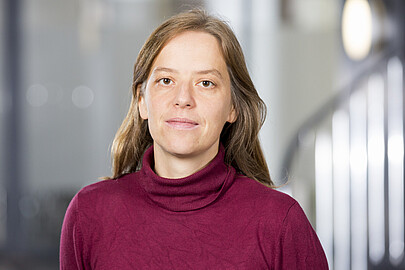
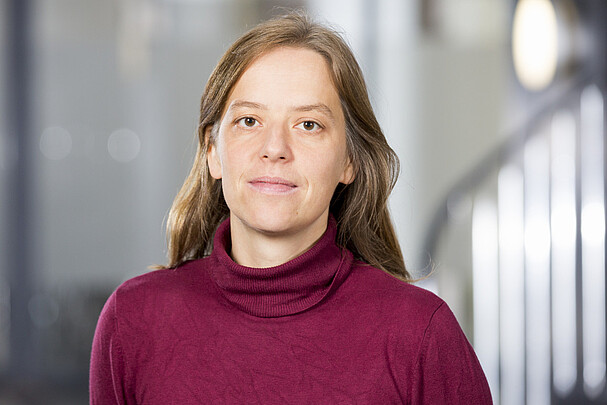
Institut für Quantenoptik
30167 Hannover


Institut für Quantenoptik
30167 Hannover
Institut für Quantenoptik
30167 Hannover
Ph.D. Students
Institut für Quantenoptik
30167 Hannover
Institut für Quantenoptik
30167 Hannover
Publications
Article
-
(2023): Two-photon optical shielding of collisions between ultracold polar molecules, Physical Review Research
DOI: 10.1103/PhysRevResearch.5.033074
arXiv: 2211.08950 -
(2022): Hyperfine dependent atom-molecule loss analyzed by the analytic solution of few-body loss equations, Physical Review Research 4, 023184 (2022)
DOI: https://doi.org/10.1103/PhysRevResearch.4.023184
arXiv: arXiv:2109.03605 -
(2021): Probing photoinduced two-body loss of ultracold non-reactive bosonic 23Na87Rb and 23Na39K molecules, Physical Review Letters
DOI: https://doi.org/10.1103/PhysRevLett.127.163401
arXiv: 2103.00510 -
(2020): Ultracold Gas of Bosonic 23Na39K Ground-State Molecules, Physical Review Letters
DOI: https://doi.org/10.1103/PhysRevLett.125.083401
arXiv: 2008.05439 -
(2020): Formation of ultracold weakly bound dimers of bosonic 23Na39K, Phys. Rev. A 101, 042704
DOI: 10.1103/PhysRevA.101.042704 -
(2019): A pathway to ultracold bosonic 23Na39K ground state molecules, New J. Phys. 21 (2019) 123034
DOI: 10.1088/1367-2630/ab5f31 -
(2019): An adaptable two-lens high-resolution objective for single-site resolved imaging of atoms in optical lattices, Review of Scientific Instruments 90, 053201 (2019)
DOI: 10.1063/1.5086539 -
(2019): Feshbach resonances in 23Na+39K mixtures and refined molecular potentials for the NaK molecule, Phys. Rev. A 99 (2019), 032711
DOI: 10.1103/PhysRevA.99.032711
arXiv: 1810.00608 -
(2018): Feshbach spectroscopy and dual-species Bose-Einstein condensation of 23Na-39K mixtures, Phys. Rev. A 97, 023623
DOI: 10.1103/PhysRevA.97.023623 -
(2016): Versatile electric fields for the manipulation of ultracold NaK molecules, New J. Phys. 18 (2016) 045017
DOI: 10.1088/1367-2630/18/4/045017
arXiv: arXiv:1603.08348 -
(2013): Multichannel modeling and two photon coherent transfer paths in NaK, Phys. Rev. A 88, 023401 (2013), DOI: http://dx.doi.org/10.1103/PhysRevA.88.023401 More info


